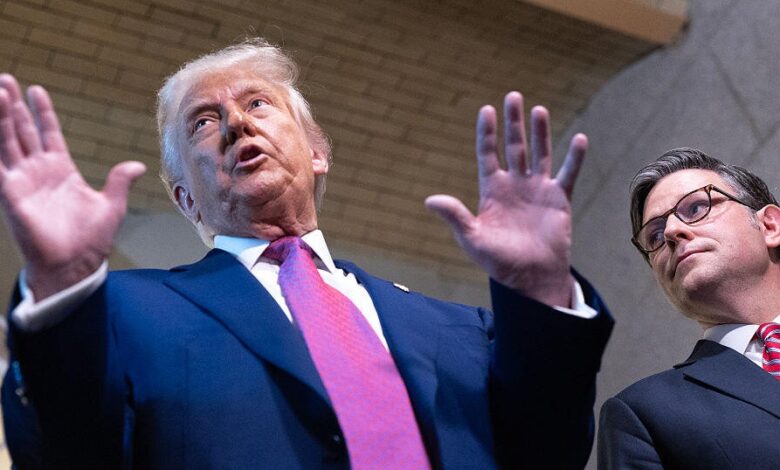Here’s what’s in Trump’s “big, beautiful bill” that narrowly passed in the House

House Republicans fought hard to push through President Trump’s second-term agenda in a last-minute session that ended with the passage of the “one big, beautiful bill” by a slim margin. The legislation now heads to the Senate for further debate and amendments, but here’s a breakdown of what was included in the bill that cleared the House.
Tax Cuts and Extensions:
The heart of the legislation revolves around extending President Trump’s 2017 Tax Cuts and Jobs Act, which was set to expire at the end of the year. Along with this extension, the bill includes additional tax cuts that were promised by the President during his campaign. These cuts range from no taxes on tips for service industry workers to tax deductions on auto loans for American-made cars. One notable change is the elimination of a $200 tax on gun silencers that has been in place since 1934.
Medicaid Restrictions:
The bill also includes modifications to the Medicaid program, including work requirements for able-bodied adults without children, more frequent eligibility checks, and a ban on Medicaid coverage for gender transition services. The amendment to the legislation accelerated the implementation of work requirements, which now apply to non-disabled adults between 18 and 65.
Increasing the State and Local Tax Deduction (SALT):
In response to concerns from blue-state Republicans, the bill raises the cap on the State and Local Tax Deduction from $10,000 to $40,000 per household for incomes up to $500,000. This change aims to alleviate the burden on middle-class homeowners in high-tax regions.
Border Security Funding:
While the majority of funding in the bill is allocated to tax cuts, resources for border security and defense are also included. This funding includes $46.5 billion for the border wall, hiring Border Patrol agents, and additional expenses related to border security.
$1,000 “Trump Accounts” for Child Savings:
A new provision in the bill creates $1,000 savings accounts for children, with the federal government contributing $1,000 to accounts for children born between 2024 and 2028. Parents can contribute up to $5,000 a year, and the funds can be used for education, job training, or purchasing a home.
Restrictions on Food Stamps:
The bill raises the upper age requirement for able-bodied adults without children to qualify for SNAP benefits from 18-54 to 18-64, shifting more costs to states.
Rolling Back Clean Energy Programs:
The legislation rolls back some clean energy tax credits and accelerates the timeline to end tax credits for new renewable energy power plants, with exceptions for nuclear plants.
Addressing the Debt Limit:
The bill includes a provision to raise the debt ceiling by $4 trillion, addressing a major deadline looming in the near future.
Overall, the “one big, beautiful bill” passed by the House reflects a mix of tax cuts, Medicaid reforms, border security funding, and other provisions that make up President Trump’s second-term agenda. As the bill moves to the Senate, further changes and debates are expected before it reaches the President’s desk for approval.





